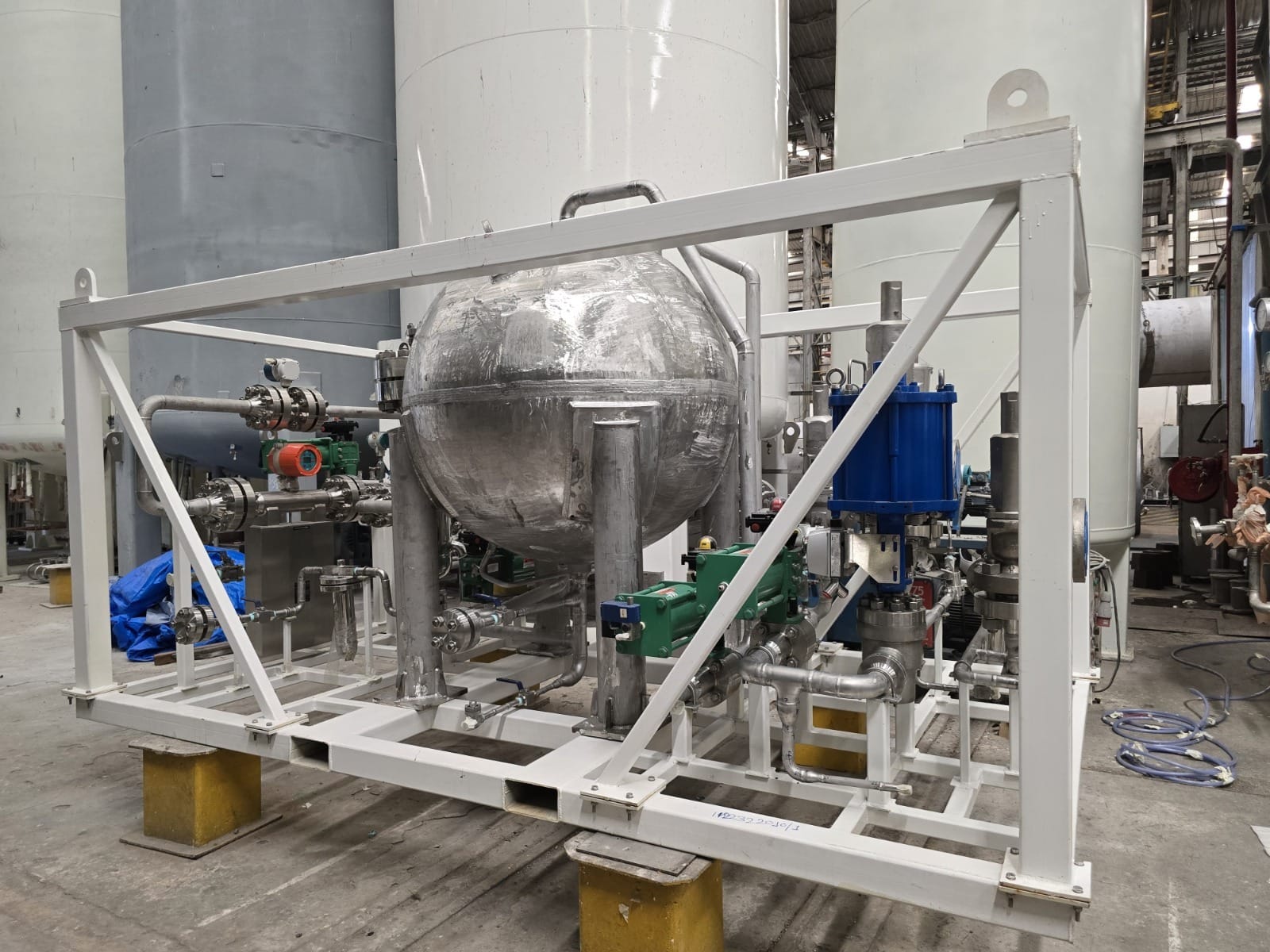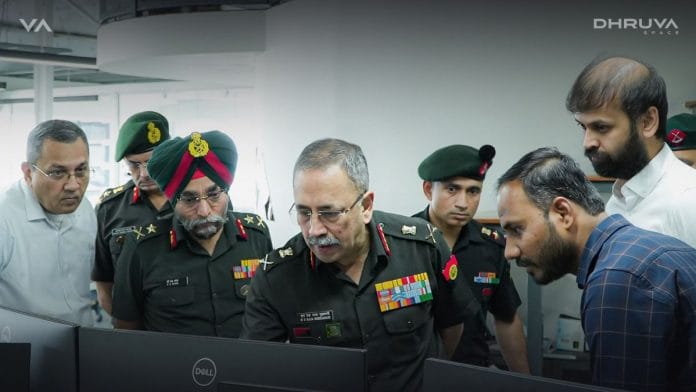New Delhi: Chennai space startup Agnikul Cosmos wants to launch satellites from land, sea, and air in times of conflict. In Bengaluru, EtherealX’s reusable launch vehicle, the first ever in India, is ready to carry military payloads when the need arises. And Hyderabad-based Dhruva Space’s earth observation satellite tool has already gained interest from government agencies for real-time access to data from space. After the Pahalgam attack and Operation Sindoor, India’s space-tech startups are increasingly pivoting from civilian to defence infrastructure.
“Space is a domain for warfare, just like air, land, and water,” said Lieutenant General Anil Kumar Bhatt, Director General, Indian Space Association (ISpA) and former Director General of Military Operations in the Indian Army. “And the Indian government has recently taken some forward-thinking decisions by letting the private sector know how they can enter the space defence domain.”
Satellite surveillance has emerged as a critical frontier in India’s growing space defence strategy. And India’s 200-odd space tech startups are leading the charge, infusing creativity with cutting-edge technologies. They are accelerating their plans, innovating on deadline, and collaborating with Indian defence agencies. From surveillance to reconnaissance to anti-satellite systems, the private sector is upping the ante as India plans to fast-track the launch of 52 dedicated satellites for the Armed Forces. The entire constellation will reportedly be deployed by 2029, while the first of these satellites is expected to launch in April 2026.

After Operation Sindoor, Chief of Integrated Defence Staff (CISC), Air Marshal Ashutosh Dixit, called for private players to not just be vendors but “partners” in national security, emphasising the role of space-based assets in enhancing India’s surveillance infrastructure. The new Military Space Doctrine, announced on 7 April this year, is expected to serve as an outline for the Indian Defence Forces and aid India’s goal of becoming a global space power.
“If you look at any global conflict, be it Operation Sindoor or the Russia-Ukraine conflict, you will see governments using private space capabilities – either for imagery or communications,” said Tanveer Ahmed, Chief Technology Officer and co-founder of the space tech company Digantara.
From the Defence Space Agency in 2018 to the Mission DefSpace challenge for new space defence startups in 2022 and Phase III of the Space Based Surveillance (SBS-III) mission in 2024, the Government of India greenlit many initiatives to boost private sector participation in the country’s defence capabilities.
Across the world, cutting-edge technology has always been in the domain of defence first. Be it the internet, or the microwave oven – they were all first developed for defence purposes – Soumya Misra, CEO, Sisir Radar
Last year in February, Chief of Defence Staff General Anil Chauhan said that over Rs 25,000 crore had been set aside for space defence requirements, giving impetus to the indigenous space defence industry. And now, the government is expected to allocate $3 billion over the next few years for defence-related space contracts, according to Lieutenant General (Dr) PJS Pannu (retired) in the Indian Aerospace and Defence Bulletin.
“India has already proven that its technologies thrive in space. Now we need to achieve scale, and send hundreds of satellites into space to build up our defence. That’s where the private sector comes in,” said Ahmed.
Also read:
Rising innovation
Only three years old, Kolkata-based startup Sisir Radar is already a world leader in remote sensing technology, which can capture images of the Earth even in the dark, through clouds and smoke and foliage.
Synthetic Aperture Radar (SAR) technology is widely used in defence for its all-weather, day-and-night imaging capabilities. High-frequency bands (C, X, Ku) offer better resolution. However, they don’t penetrate through trees and soil. This is achieved in lower frequency bands (L, P), which enable foliage and ground penetration, but with low resolution. Sisir Radar has achieved significant resolution improvements in the lower frequency bands.
If you look at any global conflict, be it Operation Sindoor or the Russia-Ukraine conflict, you will see governments using private space capabilities – either for imagery or communications – Tanveer Ahmed, CTO, Digantara
It has developed an L-Band SAR system with ‘super vision’.
“What we have achieved is better than one metre resolution in L-Band and better than three metres in P Band,” said Soumya Misra, Chief Executive Officer of Sisir Radar. “That is a 10x improvement in resolution, not just at an Indian but at a global level,” he added.
Mounted on satellites and aircraft, SAR is used to capture images with applications in the defence space sector. Sisir is also developing the world’s first privately made L-Band SAR satellite for the system. Misra sees the growth of private space defence technology as a logical outcome in Indian markets.
“Any technology that is going to space is naturally avant-garde or cutting-edge technology,” said Misra. “And across the world, cutting-edge technology has always been in the domain of defence first. Be it the internet, or the microwave oven – they were all first developed for defence purposes.”
Private space operations are becoming the first line of defence in space – Tanveer Ahmed, CTO, Digantara
On the other hand, Digantara’s modus operandi has been to focus on space situational awareness – a realm that was, until now, under the ambit of governments and national space agencies. Situational awareness refers to the surveillance of objects in space to avoid collisions with other satellites and debris. With over 11,000 satellites in the Earth’s orbit and more incoming every year, situational awareness will soon be an essential service, especially for securing defence assets in space.
In January 2025, Digantara became the first commercial player to commission a situational awareness satellite in the world.
“The government has, through its policies sent a clear message that it wants space-based R&D to be anchored around defence use cases,” said Ahmed. “Now the private sector also needs to rise to the challenge.”
“In the Space domain, the Government is often the anchor customer for emerging private players, and this foundational relationship sets the stage for strategic collaboration,” said Sanjay Nekkanti, the CEO and co-founder of Dhruva Space.
He gave the example of AstraView, launched in 2025, Dhruva’s virtual constellation that gives access to over 250 Earth Observation satellites, and how its already garnered government interest in India.
“The demand for near-real-time space-based data in India has become mission-critical for planning, surveillance, and national resilience,” said Nekkanti.
At EtherealX, co-founder Manu J Nair wants his startup to be India’s answer to Elon Musk’s SpaceX by offering affordable launch vehicle technology. His company’s flagship products – rockets – are inherently dual-use technologies.

“By design, any rocket can serve both civilian and military purposes depending on the payload,” he explained. “Our current focus is on commercial applications, though we remain open to military payloads. If the nation requires it, we’re fully prepared to support defence missions as well.”
Also read:
History of space defence tech
The defence realm in space is currently not limited to surveillance and information. Precision missiles, drones, and even anti-satellite weapons (ASATs) are common tools being developed by nations to take conflicts beyond Earth.
“Tomorrow, in a conflict between two countries, if one hits the GPS satellite (the global positioning system) or essential communication satellites, then the whole world will go blind,” said Gunjan Singh, an associate professor at OP Jindal University who specialises in space security. “We don’t realise how dependent we are on satellites, and what ASATs and space weapons are now capable of.”

In many ways, India is playing catch-up with the United States and Europe. The US established a Space Force, similar to its other Armed Forces, back in 2019. Not unlike a chapter of Star Wars, their Space Force Doctrine clearly lays out how this new ‘force’ made of ‘guardians’ will work to protect America’s space security. Its other duties also include space domain awareness – like what Digantara is doing – as well as space mobility and orbital warfare.
These duties outline exactly how the US sees space – not just as a grey zone but as an active militarised region that can, under exceptional circumstances, be weaponised.
These are also primarily the concerns that the Indian space defence sector is fulfilling, according to Gunjan Singh.
“Currently, India has two problematic borders – along China and Pakistan. The need for space technology for surveillance and reconnaissance is heightened along these borders,” she explained.
Historically, India’s space programme has had a ‘civilian bent’. With the Indian Space Research Organisation (ISRO) helming our celestial achievements, the country’s space operations have largely been separated from its defence needs, catering more to civilian and human development.
Our current focus is on commercial applications, though we remain open to military payloads. If the nation requires it, we’re fully prepared to support defence missions as well – Manu J Nair, Co-Founder & CEO, EtherealX

“Compared to, say, the US or Russia, whose space research developed as a result of the Cold War and definitely had military undertones, India has been different,” said Singh. “But now our space and defence needs have integrated, and more and more independent startups are coming in.”
Lieutenant General Bhatt (retired) added to this point by explaining how, in the beginning, space defence startups needed government support to find their ground and establish themselves. The Indian government, through initiatives such as the iDEX Startup Challenge, provided exactly that.
“The challenge firstly clarified to Indian startups what the space defence needs of the Indian government are,” he said. “It also provided monetary support and incentives to innovative startups, helping them set up their business if their ideas evolved to viable products. Most importantly, it brought them into the Indian government ecosystem, connecting them to future users and markets.”
Also read:
Challenges for private players
Defence, as a sector, has always been managed by the government. The involvement of private players – even as vendors for arms and ammunition – is strictly regulated.
The stakes are even higher when it comes to sensitive arenas such as satellite imagery or defence communication.

ThePrint broke a story earlier in May about how a private satellite company, Maxar Technologies, received orders for satellite images of Pahalgam just two months before the terrorist attack, and shortly after a Pakistani firm became its partner.
The government has, through its policies sent a clear message that it wants space-based R&D to be anchored around defence use cases – Tanveer Ahmed, CTO, Digantara
According to Bhatt, what we are seeing in India are the initial disruptions in the space defence industry, with private players coming in and innovating, and figuring out partnerships with the government.
“But globally, it has been there for a while. Be it SpaceX or Boeing or Airbus, private companies have been providing space technology for defence for years now – and we have seen it functioning well with security aspects being taken care of,” said Bhatt.
A paper published in the Indian Journal of Law and Legal Research outlines how India’s 2023 Civilian Space Policy and the upcoming Military Space Doctrine share some ‘synergies’ in terms of how the country looks at space defence. It says that India’s military and civilian space sectors seek to learn innovation and creativity from each other, and believe in the dual-use case of their infrastructure – civilian applications that can also be used for defence purposes.
“It will all be much clearer when the Military Space Doctrine is released,” said Bhatt. “We’ve made enough headway into integrating the private sector in defence space operations, but the doctrine will further add value, bringing clarity for our future collaborations.”
For private space players like Digantara and Sisir Radar, however, the road is already clear. With increasing government focus on space defence and new contracts with defence authorities, they see both a global and national shift toward private involvement in military space spheres.
“Private space operations are becoming the first line of defence in space,” said Tanveer Ahmed of Digantara.
(Edited by Zoya Bhatti)






